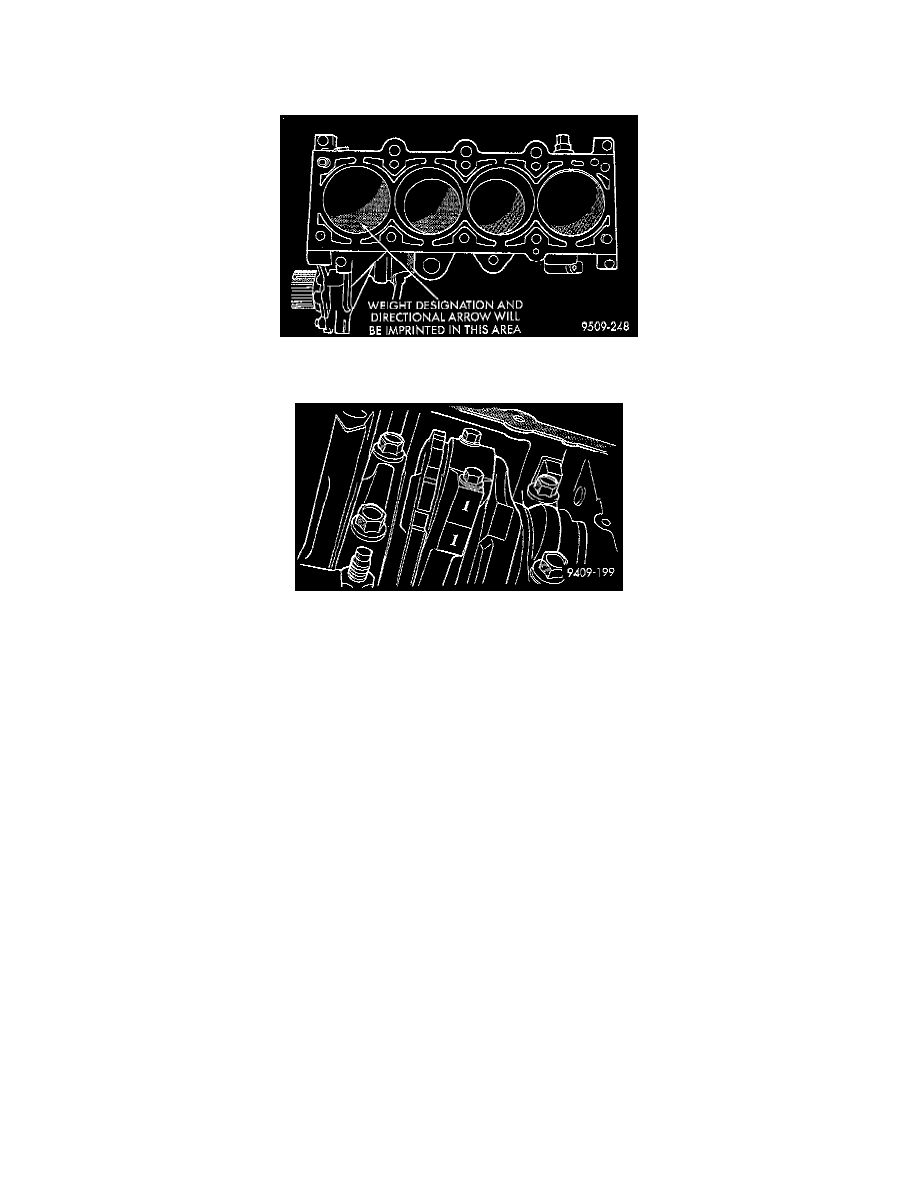Neon L4-2.0L VIN C (1997)

Piston: Service and Repair
Removal and Installation
REMOVAL
1. Remove top ridge of cylinder bores with a reliable ridge reamer before removing pistons from cylinder block. Be sure to keep tops of pistons
covered during this operation. Mark piston with matching cylinder number.
2. Remove oil pan. Scribe the cylinder number on the side of the rod and cap for identification.
3. Pistons will have a stamping in the approximate location shown. These stamps will be either a directional arrow or a weight identification for the
assembly. L is for light and H is for heavy. These assemblies should all be the same weight class. Service piston assemblies are marked with a S
and can be used with either L or H production assemblies. The weight designation stamps should face toward the timing belt side of the engine.
4. Pistons and connecting rods must be removed from top of cylinder block. Rotate crankshaft so that each connecting rod is centered in cylinder
bore.
5. Remove connecting rod cap bolts Do not use old bolts if reinstalling connecting rod. Push each piston and rod assembly out of cylinder bore.
NOTE: Be careful not to nick crankshaft journals.
6. After removal, install bearing cap on the mating rod.
7. Piston and Rods are serviced as an assembly.
INSTALLATION
1. Before installing pistons and connecting rod assemblies into the bore, be sure that compression ring gaps are staggered so that neither is in line
with oil ring rail gap.
